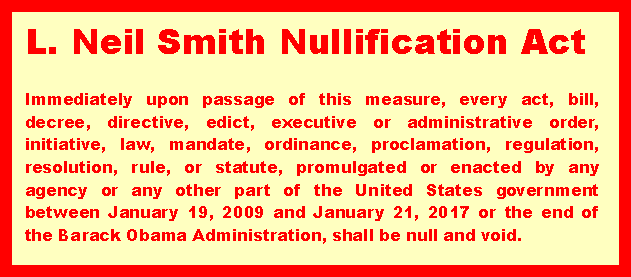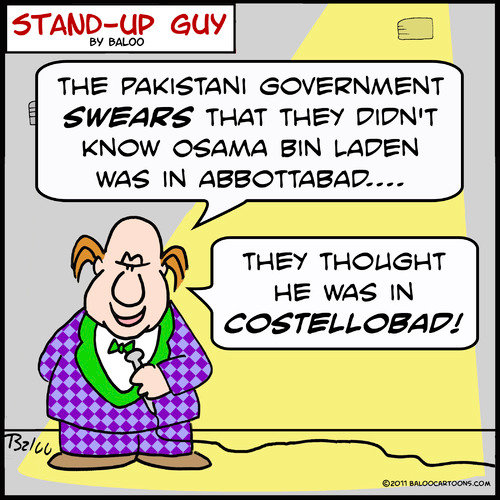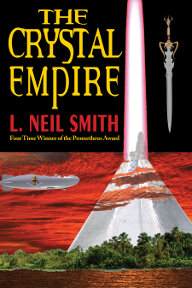
Classified Ads
Three ads this week. We always have three ads.
• READ ARTICLE
Letters to the Editor
from L. Neil Smith, Crazy Al, A.X. Perez, and Neale Osborn
• READ ARTICLE
Atlas Shrugged: Part One
by L. Neil Smith
In 1962, like the lives of countless others, my life was changed, profoundly
and forever, when a friend of mine gave me a paperback copy—which I still have, held together,
much like its owner, with rubber bands—of Ayn Rand's then-five-year-old epic philosophical novel
Atlas Shrugged. (It was changed all over again in 1979, when the author's ideas, expressed
in the book, brought me and my wife Cathy together,)
on TV meant to answer the then-current environmentalist whining about plastic.
• READ ARTICLE
Interpreting Venus Figurines—the Ambiguity of Descriptive Terms and their Impact on Reasoned Analysis of Artifacts
by Cathy L.Z. Smith
It has been variously suggested that the so-called Venus figurines
portray goddesses, dolls, toys, wards, amulets, worry stones, and teaching aides, to
name a few. They have been described as self-reverential, self-referential, educational,
mystical, mythical, and erotic, with the advocates of various interpretations judged
guilty, by some of their peers, of biases ranging from chauvinism, to feminism, to
mysticism, to racism. In some cases those accusations are clearly appropriate, but in
others they may not be true at all.
• READ ARTICLE
Killing Osama
by L. Neil Smith
Well, here we are again, gentle reader, back where we shouldn't
need to be, because any randomly selected five-year-old kid knows better. It's often
refreshing, listening to conservative commentary. You know who I'm referring to. At
least when we disagree with three quarters of what they say, it's a different three
quarters than we are used to disagreeing with. And often, in the midst of arguments
over guns, taxes, or monetary policy, we almost forget that we are not conservatives
ourselves—and that there's a damned good reason for that.
• READ ARTICLE
Passing the Test
by Tom Kozan
The world is just not a safe place. The simple fact is that thousands die
annually in the United States from preventable causes, automobile accidents, fires, disease,
road rage, pollution—the list could go on forever. It is also true that many, if not all,
of these deaths could be eliminated by taking enough care, testing and making certain that
drugs, foods, medical procedures, and machinery will actually perform the way their designers
intend. This can also extend to the environment humanity lives in. Acid rain could have been
prevented by insisting on cleaner fuel for power plants. Genetically engineered plants and
animals may someday escape from their farms and fields, invading the ecological niches of
other, natural species, causing mass extinctions. Chemicals released into the environment
harm not only humans but can wipe out entire food chains as they are concentrated by
successively higher levels of consumers. Even if global climate change is not entirely
anthropogenic, surely some portion of it could be mitigated by modifying the lifestyles of
humanity. Enter the Precautionary Principle (The Principle). The Principle is an approach
to mitigating the damage that humanity inflicts upon itself and its environment that has
gained increasing currency in the last few decades among the Baby Boomers who are now in
the position of power and decision-making in the world, as well as with their successors,
now coming into their own positions of responsibility and power, Generation "X." The
Principle states, at its core, that for any new technology, process, chemical, or medicine
to be permitted to be used, it must first be proven to be safe. In order to be proven safe,
it must also be proven that any possibly conceivable side-effects have been considered and
tested as well. The Principle certainly looks appealing, and it aspires to a laudable goal,
but for it to be considered valid, it must first demonstrate that it can fulfill its own
requirements. That is, it must prove that it reduces harm to the environment and the
inhabitants of the world, a goal it has notably failed to achieve.
• READ ARTICLE
The Myth of the "Good Cop"
The Kaptain's Log
by Kaptain Kanada, aka Manuel Miles
In the discussions raging among the Canadian people in the aftermath of
the latest outrage in the case of the murder of Mr Robert Dziekanski, the occasional comment
is made to the effect that, while the RCMP murder of an innocent man is reprehensible, one
should not blame all the cops because of "a few bad apples", et cetera. [note to American
readers: do an online search of the following: "Robert Dziekanski", "Paul Pritchard", and
"Braidwood Inquiry" for an informative and horrifying look at the state of the police state
in Canada.]
• READ ARTICLE
The Trouble Is, Our Government Does not Know How To Tell the Truth
by James Glaser
We still don't know the real story about how Osama bin Laden was
killed. The White House has put out so many conflicting stories, even if they decided
to tell the truth now, nobody would believe them. Here is what the head of the CIA
said last week....
• READ ARTICLE
Balancing The Federal Budget: A Simple Proposal
by C. Jeffery Small
Take a look at the following chart: [omitted here] See any possible
problems there? From 1940 and for thirty years thereafter, although the the national
debt was increasing, it did so at a fairly slow rate. However, by the 1970s the rate
of increase starts to accelerate as indicated by the steepening curve, until the rate
begins to go asymptotic around 2007, indicating that the the factors controlling the
debt have gotten completely out of control.
• READ ARTICLE
Atlantea The Beautiful No. 125
by L. Neil Smith and Rex May
Number 125 of a weekly cartoon series.
• READ ARTICLE
Agenda 21: The United Nations Programme of Action

Planning for Your future, serf!

www.baloocartoons.com













